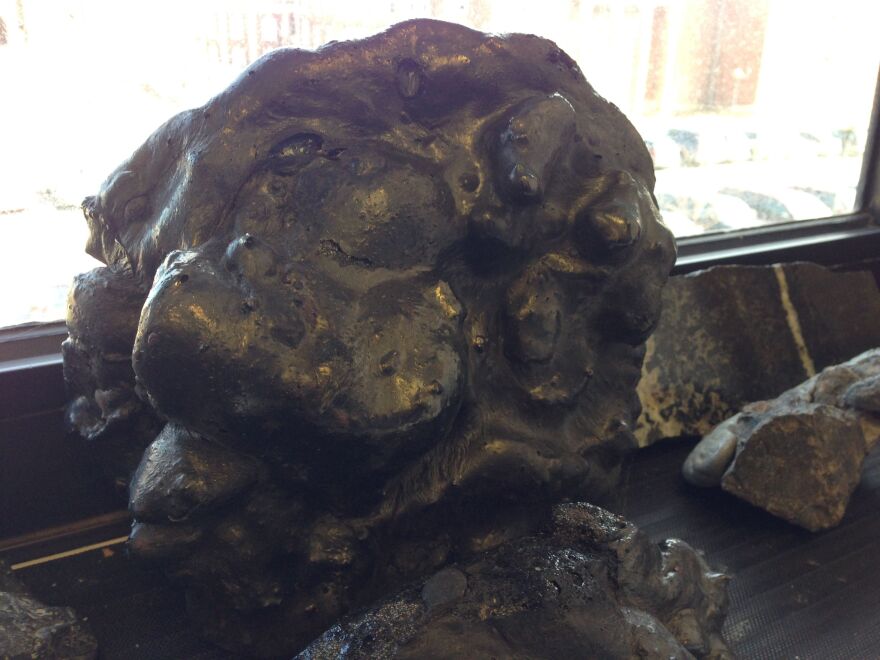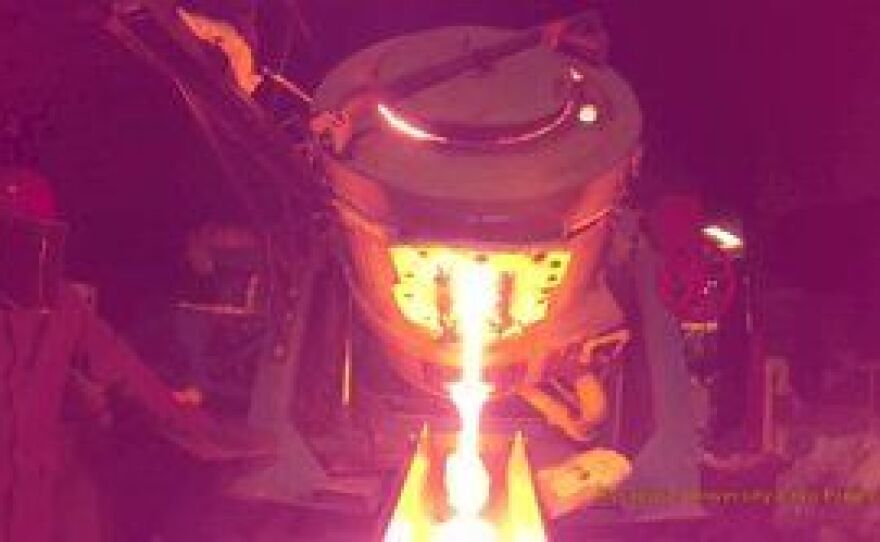There's a place at Syracuse University where art meets science. The Lava Project has been fusing the two disciplines for four years now, and soon anyone can get in on the collaboration, through a free online course.
For the scientist, creating lava and watching it flow means to “understand how lava behaves and what it means when we have certain structures in lava flows, what controls that.”
For the artist, creating the lava flow is almost a religious experience. “As humans that’s the force and the beauty and the power of nature. Which I think is the definition of the sublime.”
But the artist, sculptor Bob Wysocki, understands the science.
“I'm really interested in the validation the sciences bring when they look at it, that it really is lava,” he said.
And the scientist, geologist Jeff Karson, understands the art.
"I just really love the smooth glossy, rippled surface, elephant skin like surface, that forms from some of our most simple lava flows."
Karson, head of Syracuse University's Earth Science Department and Wysocki, an assistant professor in the school’s Department of Art, have come together to lead the Lava Project.

The project creates scientific experiments and artistic creations from something we don’t see around central New York, or this part of the world for that matter -- volcanoes.
“We’re using real lava. That means we're melting old lava, it’s actually about a billion years old. We’re heating it up to 1,200 degrees centigrade, that’s over 2,000 degrees Fahrenheit, so you can’t do it on your stovetop. Wnd we then pour it out onto various surfaces and in different conditions as experiments, to see how it behaves,” said Karson.

There are practical applications from these experiments.
“We’re trying to learn under what conditions we can divert of stop a lava flow, and obviously this could apply to living with lava in places like Hawaii or Iceland, where those are very real hazards.”
Wysocki’s part in this is babying a huge homemade temperamental oven that can melt the basalt, and then pouring molten hot lava in any number of ways to create art.
“When it pours out, when it flows down that trough and on to the different test stands, and into water -- we’ve poured it into water, into sand, ice and snow -- all of it, the whole thing, the process itself becomes performance art. And the end product, this cool flow of lava is art. All of this has become art for me,” said Wysocki.
One other unique aspect of this project, says Wysocki, is that in a university world, where sometimes academic jealousies and competition create cracks, this collaboration flows.
“It's not like it's a big physics experiment, and I come and take pictures. And for example at the Hubble, we get some pictures of faraway galaxies and stars," said Wysocki. "Our interests are mutually exclusive and equal all along the way. And that’s rare in the university and in any collaboration.”
Nobody is pouring as much lava as Karson and Wysocki anywhere in the world. And video of their lava pours have gone viral on at least one occasion.
They’re not sure how many people will sign up for the MOOC (online course) called “The Subject is Lava.” But they’re optimistic that people will want to explore that combination of science and art that is a little like a lava pour -- mostly smooth, sometimes with detours, and bubbles cracking the surface, but always enlightening, and always beautiful.
To sign up for the free Lava Project MOOC co-taught by Karson and Wysocki, go to syracuseu.coursesites.com






